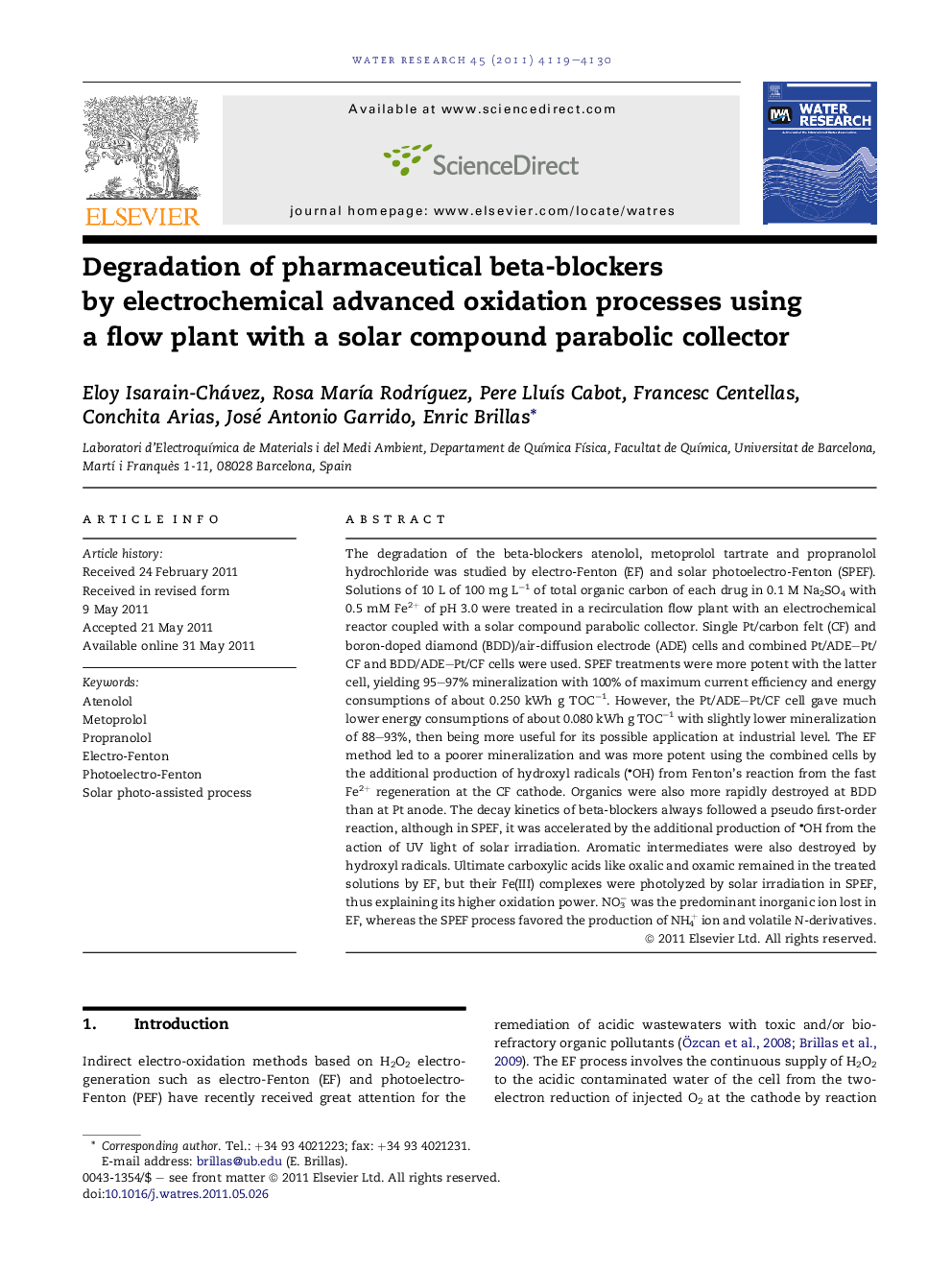| کد مقاله | کد نشریه | سال انتشار | مقاله انگلیسی | نسخه تمام متن |
|---|---|---|---|---|
| 4482842 | 1316871 | 2011 | 12 صفحه PDF | دانلود رایگان |

The degradation of the beta-blockers atenolol, metoprolol tartrate and propranolol hydrochloride was studied by electro-Fenton (EF) and solar photoelectro-Fenton (SPEF). Solutions of 10 L of 100 mg L−1 of total organic carbon of each drug in 0.1 M Na2SO4 with 0.5 mM Fe2+ of pH 3.0 were treated in a recirculation flow plant with an electrochemical reactor coupled with a solar compound parabolic collector. Single Pt/carbon felt (CF) and boron-doped diamond (BDD)/air-diffusion electrode (ADE) cells and combined Pt/ADE–Pt/CF and BDD/ADE–Pt/CF cells were used. SPEF treatments were more potent with the latter cell, yielding 95–97% mineralization with 100% of maximum current efficiency and energy consumptions of about 0.250 kWh g TOC−1. However, the Pt/ADE–Pt/CF cell gave much lower energy consumptions of about 0.080 kWh g TOC−1 with slightly lower mineralization of 88–93%, then being more useful for its possible application at industrial level. The EF method led to a poorer mineralization and was more potent using the combined cells by the additional production of hydroxyl radicals (
• OH) from Fenton’s reaction from the fast Fe2+ regeneration at the CF cathode. Organics were also more rapidly destroyed at BDD than at Pt anode. The decay kinetics of beta-blockers always followed a pseudo first-order reaction, although in SPEF, it was accelerated by the additional production of
• OH from the action of UV light of solar irradiation. Aromatic intermediates were also destroyed by hydroxyl radicals. Ultimate carboxylic acids like oxalic and oxamic remained in the treated solutions by EF, but their Fe(III) complexes were photolyzed by solar irradiation in SPEF, thus explaining its higher oxidation power. NO3− was the predominant inorganic ion lost in EF, whereas the SPEF process favored the production of NH4+ ion and volatile N-derivatives.
▶ Atenolol, metoprolol and propranolol are mineralized by solar photoelectro-Fenton. ▶ Poorer mineralization is achieved by electro-Fenton in the dark. ▶ Fe(III)-carboxylate complexes are photolyzed by sunlight in solar photoelectro-Fenton. ▶ Nitrate ions are mainly formed in electro-Fenton. ▶ Solar photoelectro-Fenton enhances the release of ammonium ion.
Journal: Water Research - Volume 45, Issue 14, August 2011, Pages 4119–4130